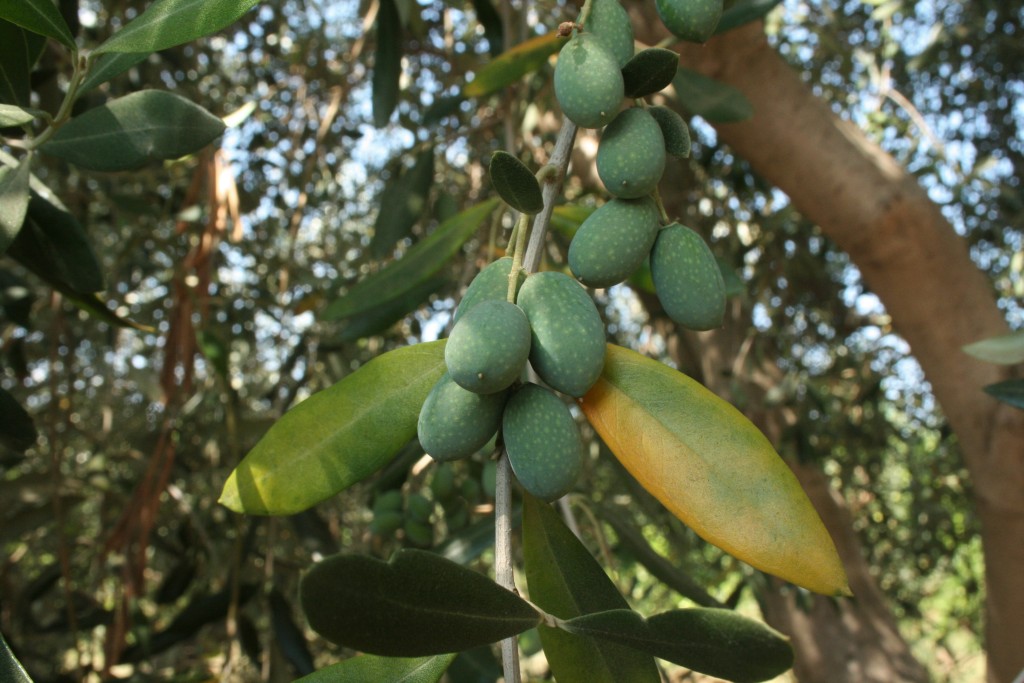The olives are plumping up and we are busy in the orchard doing our annual inspection of the trees for the dreaded Bactrocera oleae, commonly known as the olive fruit fly.

Olives plumping up on the trees
The olive fruit fly is the most economically significant pest in CA olive production. Records of the pest date back to the third century B.C. but it was only identified in the United States in 1998.
The adult female flies lay eggs on the olive fruits. When the larvae hatch they carve tunnels, feeding throughout the fruit. These tunnels destroy the pulp of the fruit, creating an ideal environment for pathogenic bacteria and fungus to grow which rot the fruit. The adult females can lay up to 400 eggs in their lifetime.
We are currently evaluating pest pressure and damage in the orchard and will continue to monitor this for the next month. If you’ve ever been on an orchard tour at the farm, you probably have seen yellow envelope shaped traps hanging from the trees. These are sticky traps loaded with pheromones to attract and capture adult flies. A high presence of adult flies in the traps means there
will be a lot of laying happening in the orchard.
Along with inspecting the traps, we start inspecting the trees for damaged fruit. We randomly collect olives in each block of the orchard and evaluate for damage. If an egg has been laid, we will see a “sting,” a small brown indent or spot on the fruit. We slice directly under the spot to see if the fruit has been infected which is indicated by a little brown line that is the beginning of a tunnel.
Most fruit fly damage occurs at the end of summer. But lucky for us the maggots are highly susceptible to heat. Temperatures above 95 Fahrenheit kill most of them. We’ve had a long string of very hot days keeping our damage down. If the weather cools down down and pest pressure heats up, we will use a rotation of organic insecticides for control. The first is a bait spray called GS120 Naturalyte which is based on the chemical compounds of the bacterial species Saccharopolyspora spinosa. It is diluted and sprayed on a small band in the middle of the tree. GS120 attracts the adult flies and they feed on it and die. The second is a biological agent called Mycotrol that contains fungus spores. The spores adhere to the host insect and they use enzymes to attack and dissolve the body of the fly. Both of these controls are not harmful to our beneficial insects like lady beetles and honeybees. These sprays allow us to control pests while maintaining our beneficial populations of insects and predators.
If you have fruit fly damage when pressing olives for oil, the free fatty acid levels or the acidity of the oil increases, causing an off-flavor in the oil. Some research indicates that any more than 10% damage is not acceptable for olive oil production. This is one of the reasons extra virgin olive oil is so valuable and is more expensive. To be determined extra virgin, one of the criteria is that no off flavors can be detected in the oil indicating pest damage to the olives was very low.
We will continue to monitor with vigilance to be sure our olives are protected and that our 2017 press will be delicious.

 Follow
Follow
